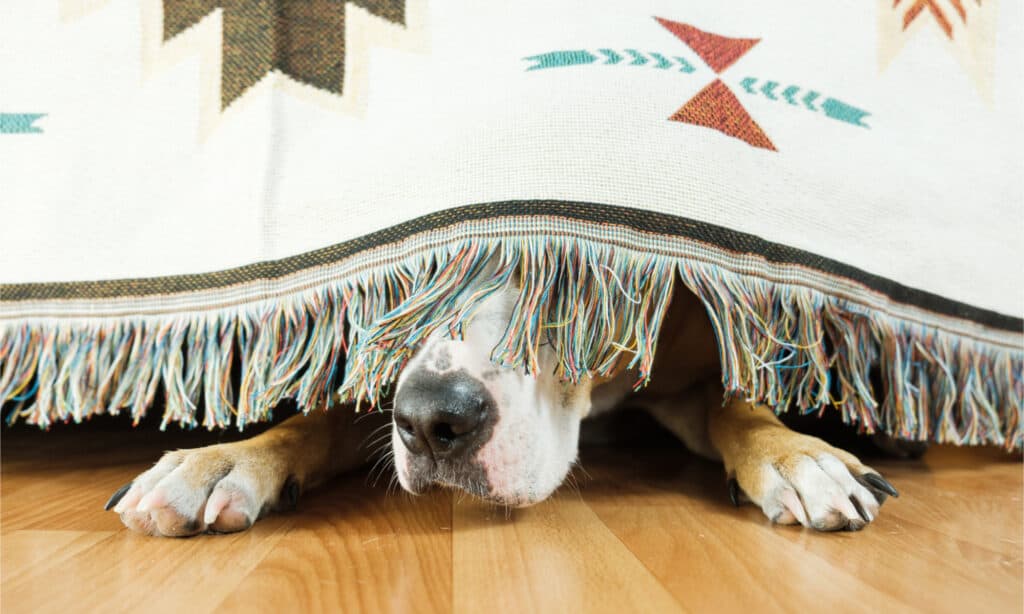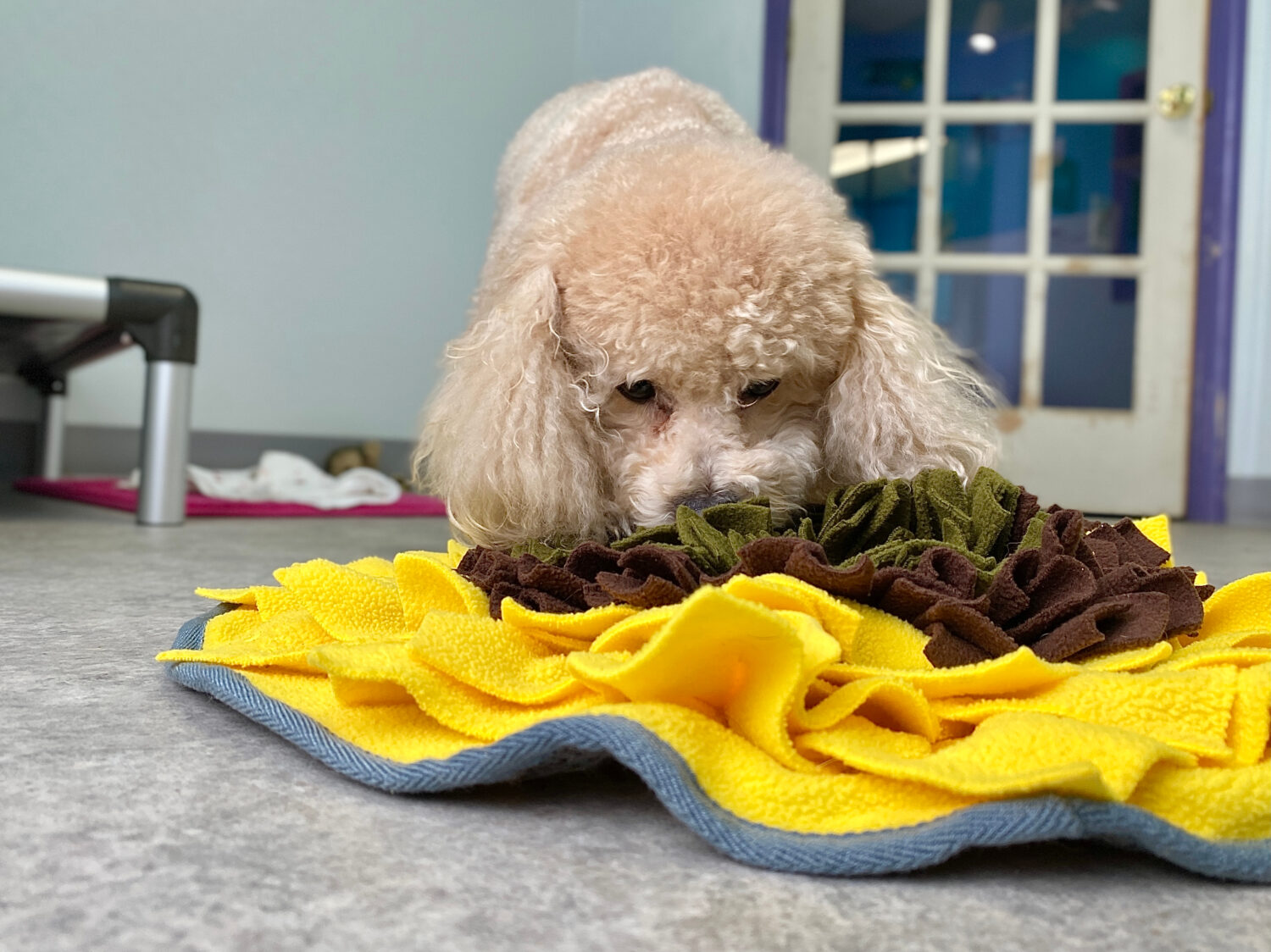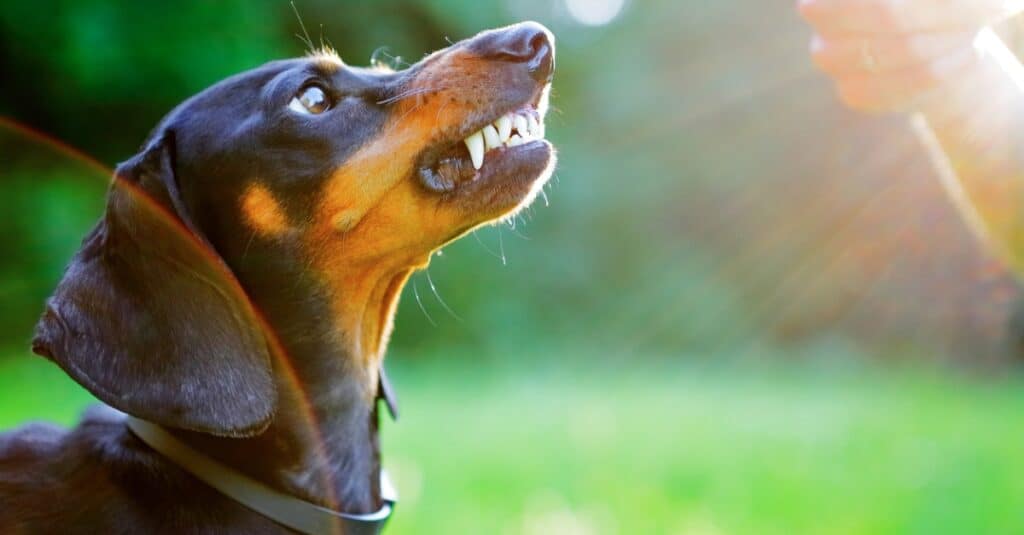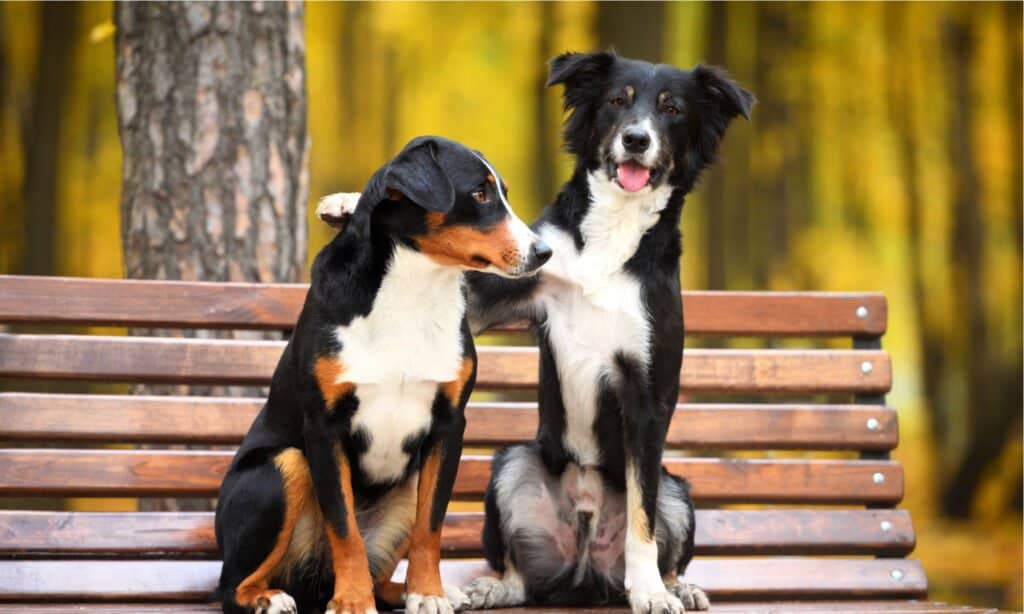How to Help Your Dog After a Fearful Event
The modern world can be quite a frightening place for a dog. Urban living, especially, can represent sensory overload for many pups. For sensitive dogs, a routine day at the park can quickly turn into a traumatic event.
So, how do you help your dog after a fearful event? In this guide, we’ll cover the a science-oriented, trauma-informed, and ethical perspective for supporting your dog after they’ve gone through something scary. Read on to learn more.
Fear in Dogs
From a human perspective, it can be easy to chuckle at some of the things that give dogs a fright. Rustling plastic bags on a sidewalk, the sound of a dump truck, slippery floors, children playing in the park, etc. However, it’s important to remember that what frightens dogs makes sense for their species. Temporary stress and fear can play crucial roles, evolutionarily, in helping us survive. For dogs, their fear reactions are often rooted in a world dominated by humans, and particularly, dominated by industrial civilization and the barrage of overwhelming scents, sights, and sounds that it presents. Heck, a lot of humans are sensory-overloaded and overwhelmed by our modern world.
In an evolutionary sense, fear can be quite adaptive. A new scent, loud sound, or sudden movement could indicate danger. In the wild, cautious animals that react quickly to possible signs of danger may be more likely to reproduce. In the modern world, however, fear responses in domesticated dogs are often maladaptive. This is because, without proper socialization and support from human caregivers, many dogs instinctively fear normal, routine aspects of an urban environment. This can lead to chronic stress in situations where the dog is physically safe but doesn’t feel safe. And because the dog doesn’t feel safe, they act in ways that humans often perceive as irrational or dangerous.

©Aleksey Boyko/Shutterstock.com
Fear and the Brain
The brains of dogs and humans share much of the same composition, including our fear and alert systems. In both humans and dogs, the part of the brain called the amygdala plays a crucial role in the mediating of emotional learning and emotion-driven behaviors. A core component of the amygdala is its role as the brain’s fear and threat detection system.
Before you’re even conscious of it, our amygdala can detect possible danger through a subconscious neural network, and as a result, initiate autonomic fear responses. Most people know this as the flight-or-fight response via the sympathetic nervous system. Since this response is autonomic, you, and your dog, can’t control its activation. This is important to remember if you feel like your dog is simply acting up in response to a loud noise or other stimuli. Your dog can’t control if their amygdala activates. You can, however, help them feel safer in their world, which can significantly lower what their brain considers threatening. You can also help them calm down quicker and regain more present thinking after an activation of the sympathetic nervous system.
Helping Your Dog After a Fearful Event: Understanding the Impact of Trauma
Researchers have gathered quite a bit of information about how trauma can affect a dog’s brain through studying dog behavior, the effects of trauma on the human brain, and how the canine and human brain overlap. An array of genetic and epigenetic factors and individual experiences can impact how someone’s brain reacts to a stressful event. What may be simply an unpleasant experience for one dog can be a truly acutely traumatic event for another.
Signs of Post-Traumatic Stress in Dogs
After a fight between two dogs at a park, one dog may take three or four days to recover and feel back to normal, while another pup may develop a generalized fear of going back to the park, on walks, or even outside at all. For dogs whose brains have trauma responses to an event, caregivers typically need to support their pups to return to a normal life.
If your pup does develop a post-traumatic stress response, your dog may exhibit signs such as:
- Chronic stress
- Generalized fear
- Fear-based aggression
- Depression
- Easily overstimulated
- Stress during normally non-stressful, routine activities
- Hiding
- Fear of novel stimuli
- Trembling and shaking
- Hyper-attachment to caregiver
- Reluctance to leave the house
- Change in appetite and energy levels
- Difficulty learning
Helping Your Dog After a Fearful Event: Decompression and Trigger Avoidance
After an acutely stressful event, it’s important to help your dog mentally recover and decompress. If your dog got into a fight at the park, for example, whether they sustained physical injuries or not, their system will likely have a marked increase in stress hormones such as cortisol and chromogranin A (CgA). To help them recover and reduce the chance of your pup developing a generalized fear or chronic stress from an incident, it’s best to spend time after a stressful event focusing on decompression and trigger avoidance.
Trigger Avoidance
During this time, it’s extremely important that the source of the trauma is not present. If your dog got into a traumatic fight with another household dog, and they are still forced to interact with each other, decompression likely can not occur. In that circumstance, you will likely need to separate the dogs temporarily so that the traumatized pup ideally can not hear or see the other dog. Over time, which can varying widely, you can attempt to slowly re-integrate the dogs with the help of a qualified professional. The timeline will depend on how the traumatized dog recovers.
If your dog got attacked at a park, you’ll want to avoid that park for a while. If your dog is showing a generalized fear of dogs after a fight, you may need to walk them in more isolated areas. Trigger avoidance is crucial for most dogs in the wake of a traumatizing experience.
Decompression
Initial decompression sometimes means temporarily suspending daily walks, especially in busy, urban environments. For some dogs, you can replace high-energy activities like going on runs and playing fetch with scent and licking-based activities. Sniffing and licking are calming behaviors for dogs and can reduce stress levels.
After a stressful event, you can provide snuffle and lickimats filled with tasty treats and peanut butter or cheese spreads. You can fill kongs with frozen beef broth or similar items. Providing these quiet, scent and food-based enrichment activities can be very soothing to your pup and help their brain calm down. It’s best to offer these items in quiet rooms where your dog feels the most safe and comfortable.
While you may want to get your dog “back to normal” as soon as possible, pushing them to get back to their regular routine too soon can cause them to go over the threshold of what their brain can currently handle. Remember, however, to assess and work with the dog in front of you. There are no exact timelines for decompression, trigger avoidance, or reintroduction of activities and places.

©Ryan Brix/Shutterstock.com
Going Over Threshold
In this context, going over threshold means the dog can no longer be present in their thinking or have much control over their behaviors. Instead, an over-threshold dog is typically driven by self-preservatory behaviors facilitated by their flight-or-fight response. For dogs who endured a traumatic experience, they may go over threshold much faster than before. If the mailperson delivering a package is typically slightly stressful for your pup, after a fearful event, they may find the mailperson to be acutely stressful. By focusing on decompression and helping your dog to feel safe after a traumatic event, you can reduce the chances that they begin having strong responses to routine stimuli.
Understanding your dog’s threshold is also crucial when attempting to reintroduce them to places or activities connected to the traumatic event. For example, if your dog has developed a generalized fear of other dogs after getting into a fight, you absolutely don’t want to try to reintroduce them to another dog from a few feet away. Your dog will almost certainly be over threshold in that environment and is likely to have a panic response that can be quite dangerous.
Go SlowlyInstead, you may want to start by simply leaving a rag covered in the scent of another dog in your house for your dog to investigate. This way, they can scent process in a safe place without the presence of the trigger. Next, you may walk your dog across the field from a stuffed dog, allowing them to process the shape from a distance. A fear-free, trauma-informed behaviorist can help you set up a step-by-step plan tailored to your pup, but the emphasis is on taking tiny, achievable steps that keeps your dog under threshold.

©iStock.com/alexandrshevchenko
Helping Your Dog After a Fearful Event: Contact a Qualified Professional
If your dog has been impacted by a traumatic event, it’s always a good idea to consult with your vet or vet behaviorist. Consulting with a veterinary behaviorist, and specifically a certified fear-free and trauma-informed professional can result in an ethical, effective treatment plan. For some pups, this plan may include medications to help lower stress levels. Some medications may be given every day, and other are only to be administered when the dog is showing acute stress signs.
A trauma-informed behaviorist can also help develop a plan to help your dog recover through daily activities. These activities are designed to help your dog feel safe, gain confidence, and recover their ability to effectively think and process their world.
Helping Your Dog After a Fearful Event: Activities to Aid in Recovery
After initial decompression, you may be able to begin to implement activities to help your dog’s brain heal. You’ll want to focus on stress releasing activities and increasing the levels of brain-derived neurotrophic factor (BDNF) in your dog’s brain. BDNF is a growth factor in the brain that is essential for learning, memory, and cognitive function. After trauma, increasing BDNF levels in the brain can help in the healing process. In postmortem studies of humans, people suffering from major depressive disorders show a markedly decreased level of BDNF. In dogs, studies show that voluntary exercise, a healthy diet, enrichment, and play increase BDNF levels. These activities can also be great for providing your dog with a healthy outlet to release stress. Note the emphasis on voluntary. Choice is an extremely important component to healing from trauma, for both dogs and people.
Proprioception Exercises
Proprioception exercise is one type of activity that can combine voluntary exercise, food enrichment, and play. These exercises can help your dog feel more grounded, and improve balance and coordination by encouraging them to pay attention to where their body is as they move. You can incorporate proprioception exercises with scent and food-based enrichment by setting up snuffle and lickimats on a variety of textures and throughout a gentle, easy-to-complete obstacle course. These courses should be extremely achievable at first and encourage your pup to think about how they are moving in their environment through the use of textured mats, poles on the ground, snufflemats on chairs, low-lying ramps, etc.
Recovering from trauma requires that your dog feels safe and secure. You don’t want to force them to complete exercises or use food as coercion to participate. Treats, snufflemats, and lickimats should also be scattered across the area so your dog can easily reach some of them without having to walk over any obstacles.
Social Enrichment
Social enrichment can also be an important tool for recovery and a source of increased BDNF levels for your dog. It’s important to let your dog lead their social interactions. Forcing interactions can cause an increase in stress levels. Remember, your dog needs to feel safe in order to recover from trauma. It’s not enough for you to know that they are physically safe. Their brain needs to process the environment as a safe place in order for them to heal.
So, make sure that social enrichment is fun for your pup. If they enjoy the presence of other dogs, try setting up play dates with one of their canine friends in a spot where your dog feels most comfortable. They may not be ready to go to the park again or even outside of your yard, but they may enjoy social enrichment in comfortable zones.

©Makarova Viktoria/Shutterstock.com
Helping Your Dog After a Fearful Event: Reintegrating into the Normal Routine
The reality is that your pup may take months or over a year to return to their pre-traumatic event routine, or they may never feel comfortable going to certain places again or participating in certain activities. If your dog was in a car during a wreck, you may need to slowly work towards trips in the car only when absolutely necessary, rather than holding onto a goal of your pup hopping in the car for daily trips to the park. In the example of the car, it may take months before your pup is even comfortable sitting in a parked car and there are dozens of steps to take before asking your dog to revisit getting into a vehicle. Again, the help of a certified, fear-free professional is crucial in the vast majority of these cases.
In humans, there is currently no definitive cure for post-traumatic stress disorder, but people can recover to a large degree with the right support and resources. Your dog also has the potential to recover, and indeed, they may only need a few days to decompress. If that’s the case, your pup recovered from a stressful event without developing a post-traumatic stress response.
Summarizing What We Can Do
In helping your dog after a fearful event, the best things you can do are to focus on decompression and recovery, speak with a qualified vet/behaviorist to set up a plan, gently introduce supportive activities, and try to keep an open mind about what your dog’s recovery may look like.
With the help of a qualified, trauma-informed professional, you may be able to help your pup enjoy going to the park again, riding in cars, or exploring novel environments. The key is to accept the process may be long, that recovery is unique to your individual dog, and that you may need to change up your routine to support your pup.









